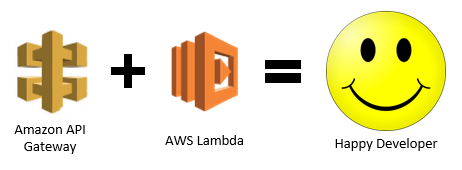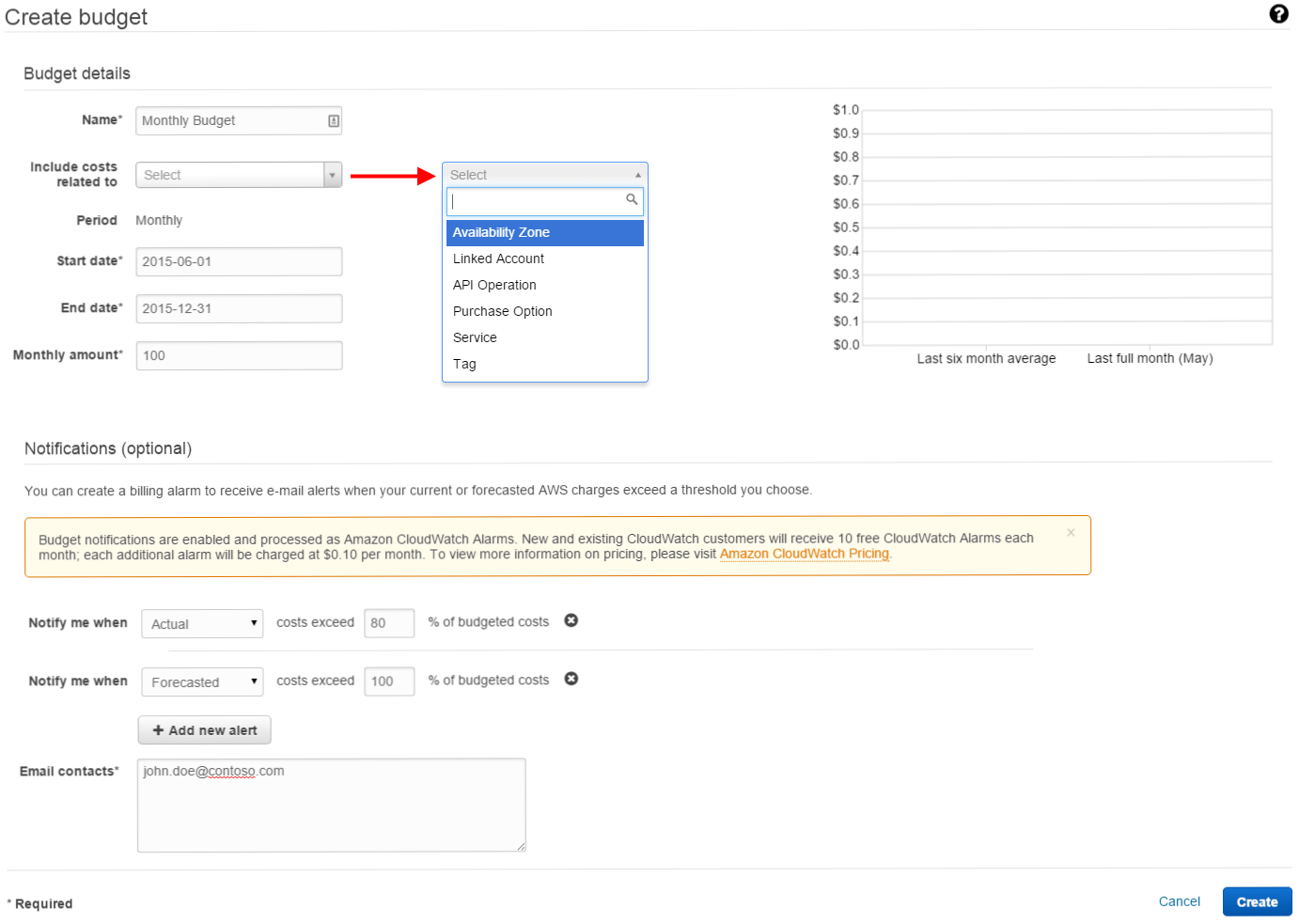Amazon Web Services (AWS) provides a full range of services that allow developers and solutions architects to design and build scalable and fault tolerant applications without a large up-front hardware investment. There’s a vast amount of information about what AWS has to offer available online but the following features are worth mentioning again.
- AWS Free Tier: included services and limits, billing alerts
- AWS Accounts and IAM Users: quick overview and best practices
- AWS EC2: IAM Roles for EC2, Instance Metadata and User Data
- AWS S3: Lifecycle rules and Amazon Glacier
- AWS Architecture Center: reference architectures, architecture whitepapers and official icons
AWS Free Tier
AWS Free Tier allows you to use most of the core AWS services free of charge for 12 months. As of August 2014, these services include, but are not limited to:
- Amazon EC2 – resizable compute capacity in the Cloud. 750 hours of t2.micro instance usage per month.
- Amazon S3 – highly scalable, reliable, and low-latency data storage infrastructure. 5 GB of Standard Storage, 20,000 Get Requests and 2,000 Put Requests.
- AWS Trusted Advisor – AWS Cloud Optimization Expert. 4 best-practice checks on performance and security. Notification and customization features.
- Amazon Mobile Analytics – fast, secure mobile app usage analytics. 100 Million free events per month.
- Amazon Cognito – mobile user identity and synchronization. Unlimited user authentication and ID generation. 10 GB of cloud sync storage. 1,000,000 sync operations per month.
- Amazon DynamoDB – fully managed NoSQL database service with seamless scalability. 100 MB of storage, 5 Units of Write Capacity and 10 Units of Read Capacity.
Additional information about the free AWS offerings can be found on AWS Free Tier page.
Keep in mind that not all of the AWS services are included in the free usage tier so it’s very easy to accidentally start accumulating balance while exploring the various AWS services. Billing alarms can be used to generate notification emails once your account balance reaches a certain threshold to avoid unexpected billing charges.
AWS Accounts and IAM Users
It’s tempting to start using your new AWS account (email address and password combination) to access the AWS resources but that goes against the AWS security best practices. AWS Identity and Access Management (IAM) users and groups should be used to manage access to AWS resources. Here’s a quick summary that describes each of these account types:
- AWS account – this is the account you create when you sign up for AWS and it represents a business relationship with AWS. AWS accounts have root permissions to all AWS resources and services and should not be used for day-to-day interactions with AWS.
- IAM users – can be a person, service, or application that needs access to your AWS resources. Best practice is to create IAM users and assign them individual security credentials needed to access AWS services and resources. You can also create an IAM user for yourself, grant it administrative privileges, and use that IAM user to access the AWS management console or the APIs.
For more details, refer to the IAM Best Practices article and the AWS Security Best Practices whitepaper.
AWS EC2
It may be challenging to securely distribute and rotate AWS credentials used by your EC2 instances to communicate with other AWS services and resources. In a typical application, the AWS access keys are included in the application configuration file which means that they are visible to anyone who has access to the EC2 instance and makes it difficult to rotate the credentials on a regular basis when you have a large number of running EC2 instances. IAM Roles were designed specifically to address this problem and they let you delegate permissions to your EC2 instances to make API requests without the need to manage security credentials at the application level.
You can read more about AWS IAM Roles in the IAM Roles for Amazon EC2 article.
In addition to AWS credentials, your application may need to retrieve additional information about the EC2 instance it’s running on. For example, when logging application errors you may want to also include the EC2 instance ID or the AMI ID used to launch the instance. Another common requirement is passing configuration information to a newly launched EC2 instance. AWS offers an elegant solution for these problems called Instance Metadata and User Data. The instance metadata is organized in categories and is accessible from within the instance via the following URL: http://169.254.169.254/latest/meta-data
To get the instance AMI ID, simply call http://169.254.169.254/latest/meta-data/ami-id or call http://169.254.169.254/latest/meta-data/hostname to get the hostname of the current EC2 instance.
To retrieve user data available to the instance, use the following URL: http://169.254.169.254/latest/user-data
To learn more about, visit the Instance and Metadata and User Data page.
AWS S3
AWS Simple Storage Service (S3) is a well-known cloud file storage service. One of the lesser known features of Amazon S3 is the ability to auto archive content to Amazon Glacier, an extremely low cost cloud archive service optimized for infrequently accessed data. Content archival is controlled by Lifecycle rules that enable you to ensure that data is automatically stored on the cloud storage option that is most cost-effective for your needs. Be aware that Amazon Glacier is not currently available on the AWS Free Tier.
For more information, please visit the Amazon Glacier section of the Amazon S3 FAQs article.
AWS Architecture Center
AWS Architecture Center is the go-to place to find the guidance and best practices necessary to build highly scalable and reliable applications on the AWS platform. Some of the highlights are:
- AWS Reference Architectures – single-page datasheets that provide you with the architectural guidance on how to take full advantage of AWS services.
- Architecture Whitepapers from AWS – offers in-depth articles that focus on particular concepts such as fault-tolerance or security best practices in the AWS Cloud. SharePoint 2013 on AWS whitepaper will teach you how to deploy SharePoint 2013 on AWS, following best practices for deploying a secure and highly available architecture across multiple Availability Zones.
- AWS Simple Icons – an official icon set that includes icons for several AWS products and resources. Available in MS PowerPoint, MS Visio and SVG and EPS formats.

